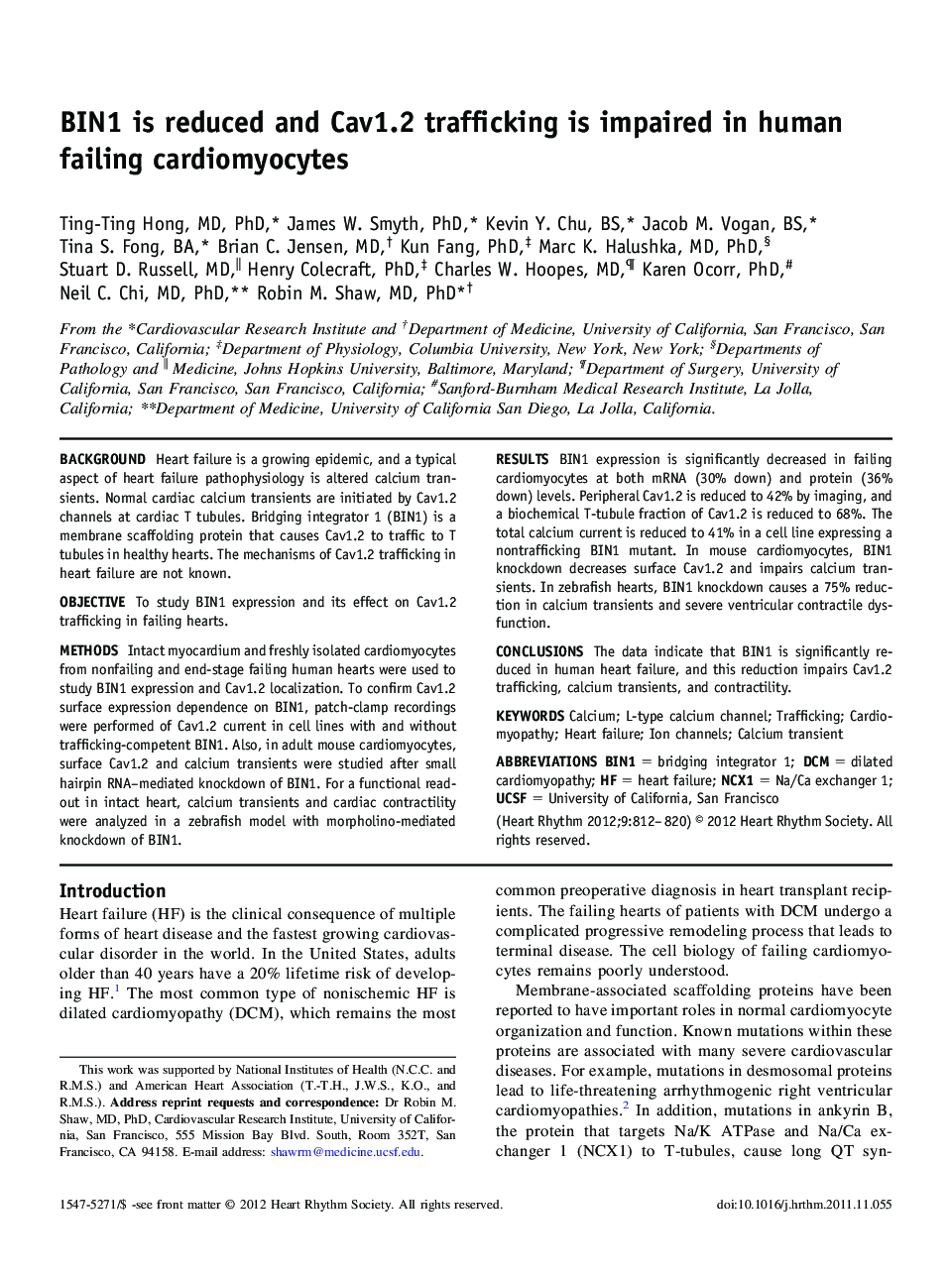| کد مقاله | کد نشریه | سال انتشار | مقاله انگلیسی | نسخه تمام متن |
|---|---|---|---|---|
| 2922461 | 1175846 | 2012 | 9 صفحه PDF | دانلود رایگان |

BackgroundHeart failure is a growing epidemic, and a typical aspect of heart failure pathophysiology is altered calcium transients. Normal cardiac calcium transients are initiated by Cav1.2 channels at cardiac T tubules. Bridging integrator 1 (BIN1) is a membrane scaffolding protein that causes Cav1.2 to traffic to T tubules in healthy hearts. The mechanisms of Cav1.2 trafficking in heart failure are not known.ObjectiveTo study BIN1 expression and its effect on Cav1.2 trafficking in failing hearts.MethodsIntact myocardium and freshly isolated cardiomyocytes from nonfailing and end-stage failing human hearts were used to study BIN1 expression and Cav1.2 localization. To confirm Cav1.2 surface expression dependence on BIN1, patch-clamp recordings were performed of Cav1.2 current in cell lines with and without trafficking-competent BIN1. Also, in adult mouse cardiomyocytes, surface Cav1.2 and calcium transients were studied after small hairpin RNA–mediated knockdown of BIN1. For a functional readout in intact heart, calcium transients and cardiac contractility were analyzed in a zebrafish model with morpholino-mediated knockdown of BIN1.ResultsBIN1 expression is significantly decreased in failing cardiomyocytes at both mRNA (30% down) and protein (36% down) levels. Peripheral Cav1.2 is reduced to 42% by imaging, and a biochemical T-tubule fraction of Cav1.2 is reduced to 68%. The total calcium current is reduced to 41% in a cell line expressing a nontrafficking BIN1 mutant. In mouse cardiomyocytes, BIN1 knockdown decreases surface Cav1.2 and impairs calcium transients. In zebrafish hearts, BIN1 knockdown causes a 75% reduction in calcium transients and severe ventricular contractile dysfunction.ConclusionsThe data indicate that BIN1 is significantly reduced in human heart failure, and this reduction impairs Cav1.2 trafficking, calcium transients, and contractility.
Journal: Heart Rhythm - Volume 9, Issue 5, May 2012, Pages 812–820